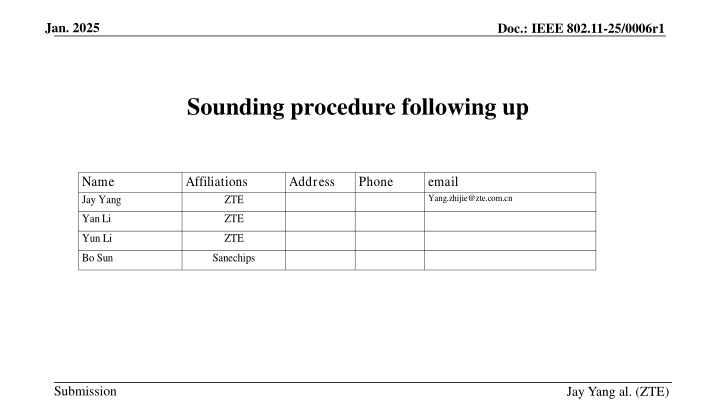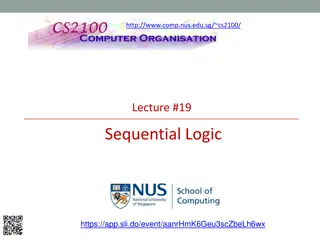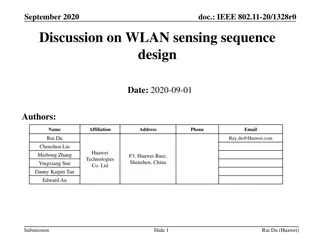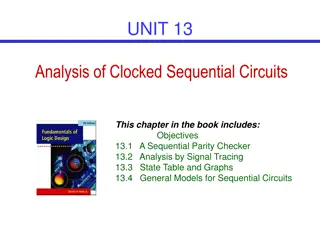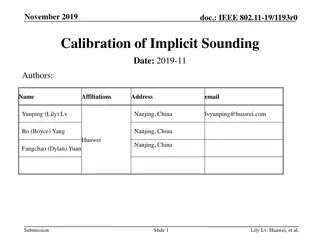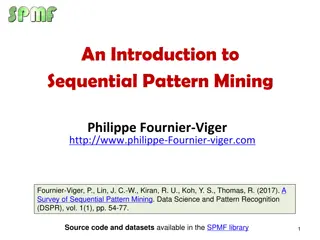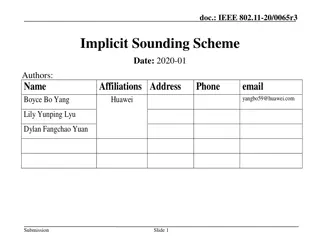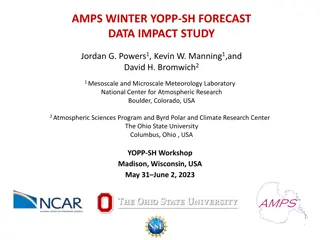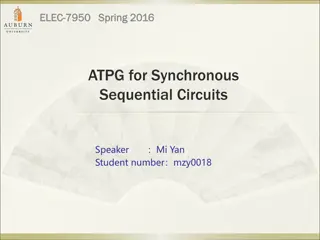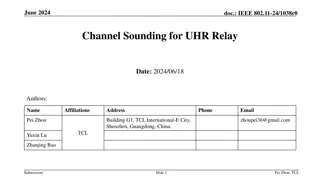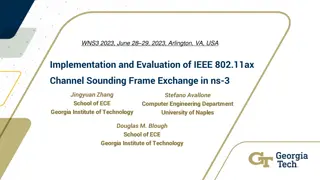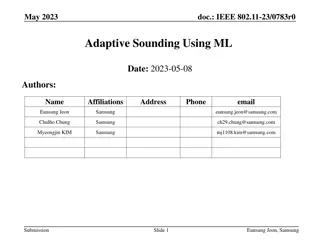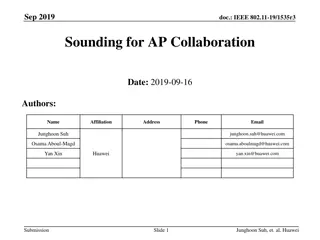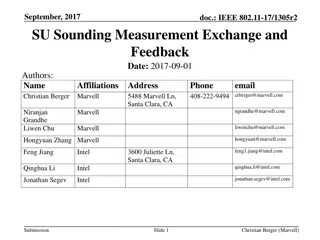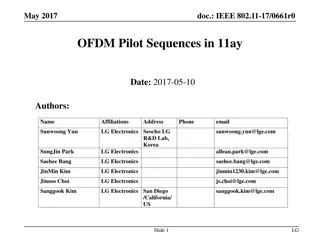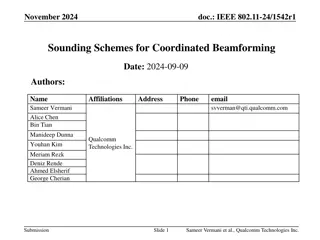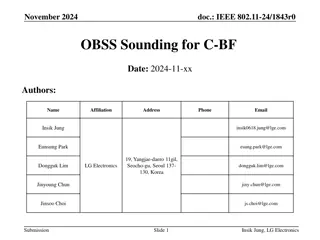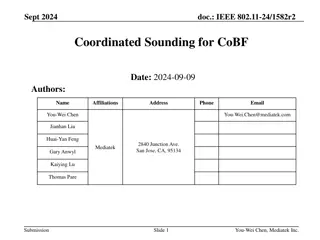IEEE 802.11-25 Sounding Procedure for Joint and Sequential Sequences
This document discusses the sounding protection and fast recovery approach for IEEE 802.11-25, focusing on issues related to NDP from responding APs in joint and sequential sounding procedures. It addresses the challenges of missing NDP frames, interference from hidden nodes, and error parsing scenarios that impact the effectiveness of the sounding process. The proposed solutions aim to enhance the reliability and robustness of the sounding sequences for efficient communication in wireless networks.
Download Presentation

Please find below an Image/Link to download the presentation.
The content on the website is provided AS IS for your information and personal use only. It may not be sold, licensed, or shared on other websites without obtaining consent from the author.If you encounter any issues during the download, it is possible that the publisher has removed the file from their server.
You are allowed to download the files provided on this website for personal or commercial use, subject to the condition that they are used lawfully. All files are the property of their respective owners.
The content on the website is provided AS IS for your information and personal use only. It may not be sold, licensed, or shared on other websites without obtaining consent from the author.
E N D
Presentation Transcript
Jan. 2025 Doc.: IEEE 802.11-25/0006r1 Sounding procedure following up Name Jay Yang Affiliations Address Phone email Yang.zhijie@zte.com.cn ZTE YanLi ZTE Yun Li ZTE Bo Sun Sanechips Submission Jay Yang al. (ZTE)
Jan. 2025 Doc.: IEEE 802.11-25/0006r1 Introduction In Co-BF,11bn agreed on two new sounding sequences: Joint sounding and sequential sounding. In Joint sounding procedure, the NDPA solicits the NDP from both initiating AP and responding AP , and solicits the associated STA to receive the NDP. In Cross-BSS Sequential sounding, the NDPA solicits the NDP from responding AP , and solicits the associated to STA receive the NDP. The problem is: the responding AP may not send the NDP due to some reasons, which causes the sounding procedure failure. In this contribution, we would like to discuss the sounding protection and fast recovery approach Submission Slide 2 Jay Yang, et al. (ZTE)
Jan. 2025 Doc.: IEEE 802.11-25/0006r1 Recap: Sequential sounding in motion[#100] Submission Slide 3 Jay Yang, et al. (ZTE)
Jan. 2025 Doc.: IEEE 802.11-25/0006r1 Recap: Joint sounding sequence in motion[#101] Submission Slide 4 Jay Yang, et al. (ZTE)
Jan. 2025 Doc.: IEEE 802.11-25/0006r1 Problem : NDP from responding AP missing issue responding AP may not send NDP after NDPA+SIFS The CCA indicates medium busy due to the interference from some hidden nodes. The responding AP may not receive the NDPA or error parse the received NDPA The initiating AP may detect the NDP missing issue from responding AP in sequential sounding procedure. After SIFS, if the initiating AP doesn t detect the NDP frame, the initiating AP will determine the NDP is missing from the responding AP. The initiating AP may retransmit the NDPA frame to fast recovery the sounding procedure. The initiating AP can t detect the NDP missing issue from responding AP in Joint sounding procedure. The initiating AP will stay in TX state(to transmit NDP in parallel) Slide 5 Submission Jay Yang, et al. (ZTE)
Jan. 2025 The following figure depicts the NDP from responding AP missing issue in sequence sounding procedure Doc.: IEEE 802.11-25/0006r1 Submission Slide 6 Jay Yang, et al. (ZTE)
Jan. 2025 The following figure depicts the NDP from responding AP missing issue in Joint sounding procedure Doc.: IEEE 802.11-25/0006r1 Submission Slide 7 Jay Yang, et al. (ZTE)
Jan. 2025 Doc.: IEEE 802.11-25/0006r1 Proposal: Add ICF/ICR to address the hidden node issue ICF/ICR exchange in cross-BSS sequential sounding and Joint sounding BSRP/M-BA(multi-STA BA) already used in other features, we propose to reused BSRP/M- BA as ICF/ICR The Duration of ICF/ICR should cover the whole sounding procedure, or at least cover the NDP transmission time from responding AP(long protection). It s still not efficient if the responding AP doesn t make the response when ICF solicits single responding AP. One approach is to add double ICF/ICR exchanges The first ICF/ICR polling phase : solicit multiple responding APs and associated STAs with short protection. The second ICF/ICR(responding AP s TXOP protection): solicit single responding AP with long protection. Submission Slide 8 Jay Yang, et al. (ZTE)
Jan. 2025 The following figure depicts the single ICF/ICR exchange to protect the TXOP in Joint sounding procedure Doc.: IEEE 802.11-25/0006r1 Submission Slide 9 Jay Yang, et al. (ZTE)
Jan. 2025 The following figure depicts the double ICF/ICR exchange in Joint sounding procedure Doc.: IEEE 802.11-25/0006r1 Submission Slide 10 Jay Yang, et al. (ZTE)
Jan. 2025 Doc.: IEEE 802.11-25/0006r1 Proposal2:NDPA retransmission in sequential sounding procedure The initiating AP retransmit NDPA if NDP from responding AP is not detected The initiating AP may retransmit NDPA after PIFS (as shown in the Figure) The initiating AP may terminate the cross-BSS sounding procedure after retry several times. Submission Slide 11 Jay Yang, et al. (ZTE)
Jan. 2025 Doc.: IEEE 802.11-25/0006r1 Summary Analyze the NDP from responding AP missing issue Propose to use ICF/ICR for sounding procedure protection Single ICF/ICR approach Double ICF/ICR approach Propose to retransmit NDPA if the solicited NDP from responding AP is missing in sequential sounding procedure Submission Slide 12 Jay Yang, et al. (ZTE)
Jan. 2025 Doc.: IEEE 802.11-25/0006r1 THANK YOU Submission
Jan. 2025 Doc.: IEEE 802.11-25/0006r1 Reference 24/209r6 TGbn Specification Framework for TGbn Submission Slide 14 Jay Yang, et al. (ZTE)
Jan. 2025 Doc.: IEEE 802.11-25/0006r1 SP1 Do you agree to add the ICF/ICR frame exchange to protect the TXOP of the responding AP in the Co-BF sounding procedure? The duration in ICF/ICR should at least cover the transmission time of NDP Submission Slide 15 Jay Yang, et al. (ZTE)
Jan. 2025 Doc.: IEEE 802.11-25/0006r1 SP2 Do you agree to add the double ICF/ICR frame exchange to protect the sounding procedure? The duration in the first ICF/ICR only cover the transmission of ICR1 ICF1 may solicit multiple APs to make the response. The duration in the second ICF/ICR should at least cover the transmission time of NDP ICF2 at most solicit one of the APs that responded with ICR1 to ICF1 to make the response. Submission Slide 16 Jay Yang, et al. (ZTE)
Jan. 2025 Doc.: IEEE 802.11-25/0006r1 SP3 Do you agree the initiating AP may retransmit the NDPA frame after PIFS interval if the NDP from the responding AP is missing in sequential sounding procedure. Submission Slide 17 Jay Yang, et al. (ZTE)
